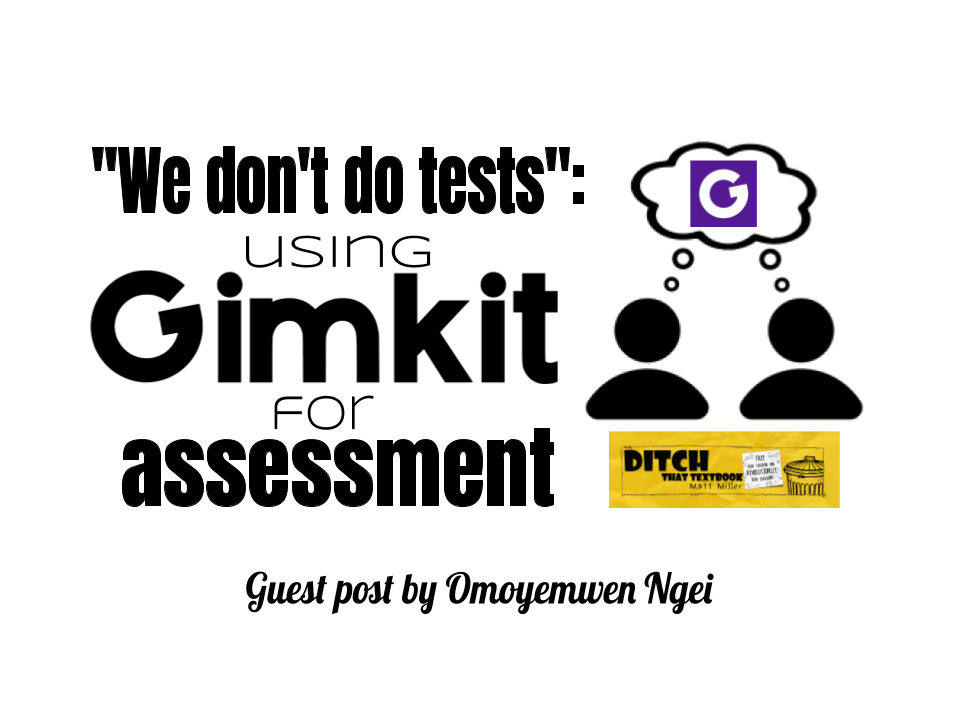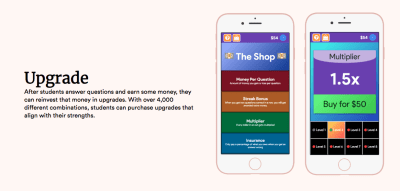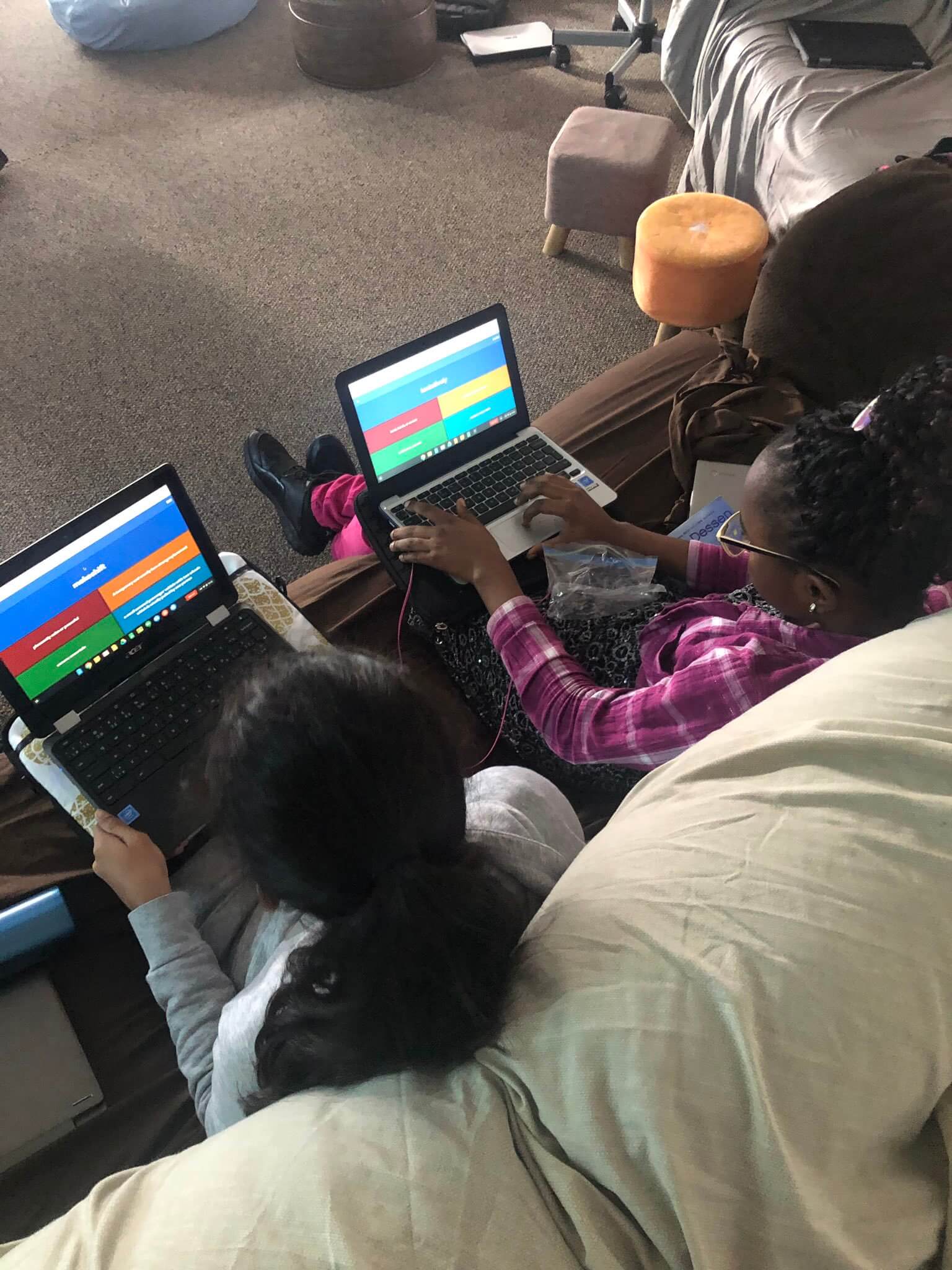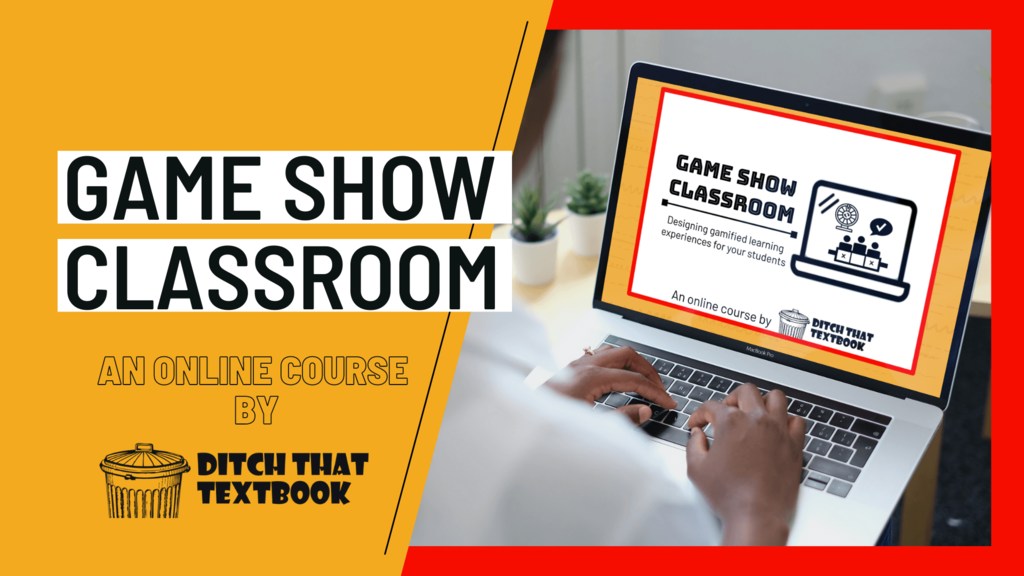
Gimkit is a game show for the classroom that makes assessments feel like fun! How can you use Gimkit in your class? Read on for ideas.
This post is written by Omoyemwen Ngei, a grade six teacher at Ellerslie campus, Edmonton Public School District. in Edmonton, Alberta, Canada. Prior to teaching in Canada, she was a junior high teacher and school administrator in Nigeria. You can connect with Omoyemwen on Twitter @BecStyne.
At our most recent parent-teacher conference in October, a student in my class told her mum that we do not do tests in this class. As her mum looked questioningly at me, I smiled and then said, “We do tests. They just don't know it.” Gimkit, among other educational software/resources, acts as ongoing formative assessments in my class.
When I found out about Gimkit on Twitter in 2018, I never imagined what time-saving, stress-relieving, excellent class engagement tool I had stumbled onto. Gimkit has not only lived in my classroom, but it has also been a super addition to my PLN on twitter. The team at Gimkit makes me feel like I’m a part of the team and not just a subscriber. They incorporate suggestions from educators almost instantaneously and are super flexible at changing things around if they don’t seem to be working.
What is Gimkit?
Gimkit was created by students in Seattle, Washington, and it’s still maintained by them. They made the game they wanted to play and then shared it with the world.

Gimkit (gimkit.com) is like Quizizz with power-ups. In Quizizz, students answer questions to collect points cumulatively throughout the game. In Quizizz, the points just add up on the leader board; in Gimkit, students use their points as currency to buy power-ups in the store. Power-ups let students earn more points per question, get additional points when they hit a streak, and even lose less points when incorrect. The basic versions (free) limits the number of games you can create. The pro plan ($4.99/month) has unlimited creation of games (called kits) and unlimited revisions to them.
Assessing with Gimkit
When we play the Gimkit games in class, it’s like a mini gaming arena. The conversations are enthralling, and I won’t deny I’m part of the crowd urging them on all the time. I see friendships start, and others solidify during this game. I want to share some tidbits on Gimkit from our class these past two months.
One boy Roberto (not his real name), is the only student that asked me a pointed question. He said, “Mrs. Ngei, what do you do while we are playing Gimkit?” I took him to my computer, and I showed him what I did. I was planning the next kits as I observed their results in the current game kits, and then I showed him the reports on Gimkit. The reports showed their mastery of the concepts.
I showed him that although he usually won the game (he self-describes as an avid gamer), his scores are in the 80s, while students who frequently score 100% did not win. As he asked about this, I explained that his successful use of game strategies enables him to win the kit even though he did not get all the answers right.
Gimkit in the classroom
As you can perceive, my class is a strong fan base of Gimkit. Let me share one of our epic Gimkit games.

The bell for recess rang during a Gimkit Halloween themed game (one of the different ways Gimkit changes things up to keep engagement up), and the score was Zombies 8, Humans 476. Most members of the Zombies team were giving up, closing their Chromebooks, when Roberto started encouraging the Zombies. (Note that Roberto was described as an average student, with poor leadership and self-regulating skills at the beginning of the school year.)
His words: “Don’t buy anything yet, use the upgrades people, hold on, hold on, I’m making money, just wait for it.” At this time, we had some students at different stages of preparation to go for recess, we had students who had come for their friends from other classes hanging just outside the door and wondering what was happening, but Roberto kept encouraging his team, and the encouragement started showing on the results.
Zombies scores began to rise, and students paused, some returned to their Chromebooks, the atmosphere was electrifying with Roberto’s rallying of his Zombies team with “Okay, go for it. "Repair, repair, repair." Just like that the Zombies had tied with the Humans, the Humans were challenged and refused to back down. Suddenly, this young boy screamed, “Sabotage!!!” It was a massacre. They threw all they had at the Humans and then it was game over. I was shameless in my screaming with all the kids.
Everyone waited with bated breath as the screen went blank, eerie sounds evolved, and then it revolved; eventually, the result was displayed.
Zombies WON, HUMANS LOST.
It was a powerful moment in our classroom. The leadership skills and confidence Roberto showed during this particular game were crucial to the team's success.
Gimkit is more than just a game
Once or twice a week, my former students come to my class to play Gimkit during recess. I give them kits in their present classes (grades 7 and 8) even though I am not teaching them. To win, most students like Roberto, study the kits at their own time (they revise without realizing it). During the game, they:
- work in teams (collaborate in social learning);
- develop and deploy winning strategies (create learning) and
- study why they did not win (revise and relearn).
After one particularly close game set, and while the winning team was celebrating, one member of the other team stood up and announced. “Hey, we came in second place.” This drew an impressive round of laughter and applause. Yes, winning is in the mind, so even though there were just two teams. They came in second, and that in itself is an achievement.
Playing Gimkit, you never really lose. Everybody gets better at their learning. Social, communication and collaborative skills improve, and many learners who would otherwise balk at writing tests jump to do tests and revision that is disguised as a Gimkit set. This is one of my exceptional teacher weapons and more and more of my colleagues and on my Twitter PLN are playing Gimkit in their classrooms too 🙂
Enroll in the Game Show Classroom online course!

What you'll get...
🛠 Tools to make review and practice more like a game
💡 Ideas for turning the classroom into a game
🎨 Design tips
🧩 Inspiration to build your own games
For notifications of new Ditch That Textbook content and helpful links:
Are you looking for quality, meaningful professional learning that both equips and inspires teachers?
Matt provides in-person and virtual keynotes, workshops and breakout sessions that equip, inspire and encourage teachers to create change in their classrooms. Teachers leave with loads of resources. They participate. They laugh. They see tech use and teaching in a new light. Click the link below to contact us and learn how you can bring Matt to your school or district!
Is Matt presenting near you soon? Check out his upcoming live events!




[…] "We don't do tests." Learn how teacher Omoyemwen Ngei uses Gimkit to create assessments her students love. […]
[…] we-dont-do-tests-using-gimkit-for-assessment […]
[…] Read the full story by Ditch That Textbook […]